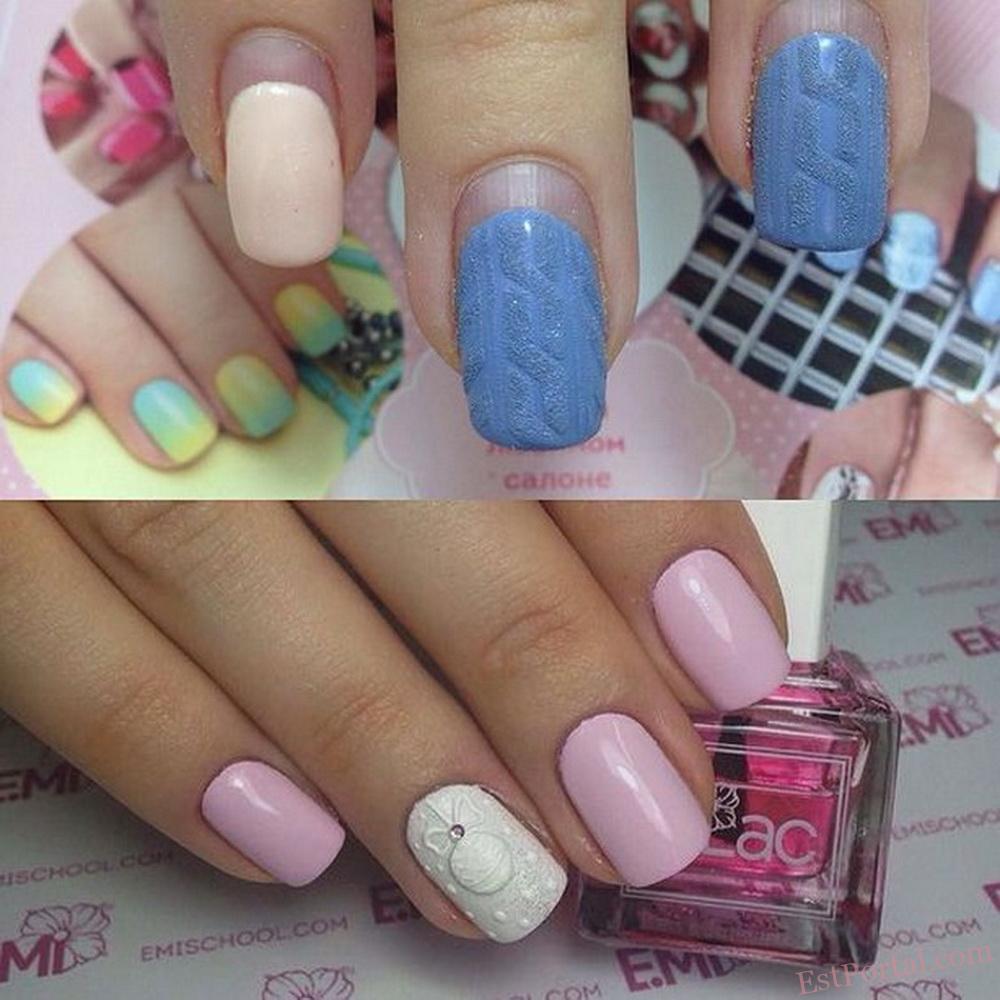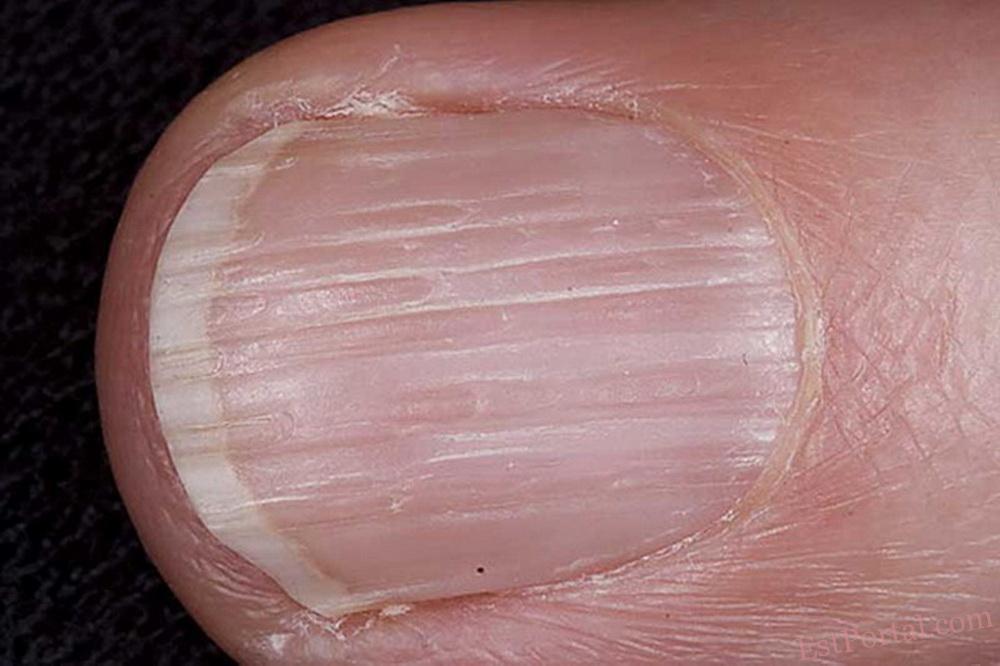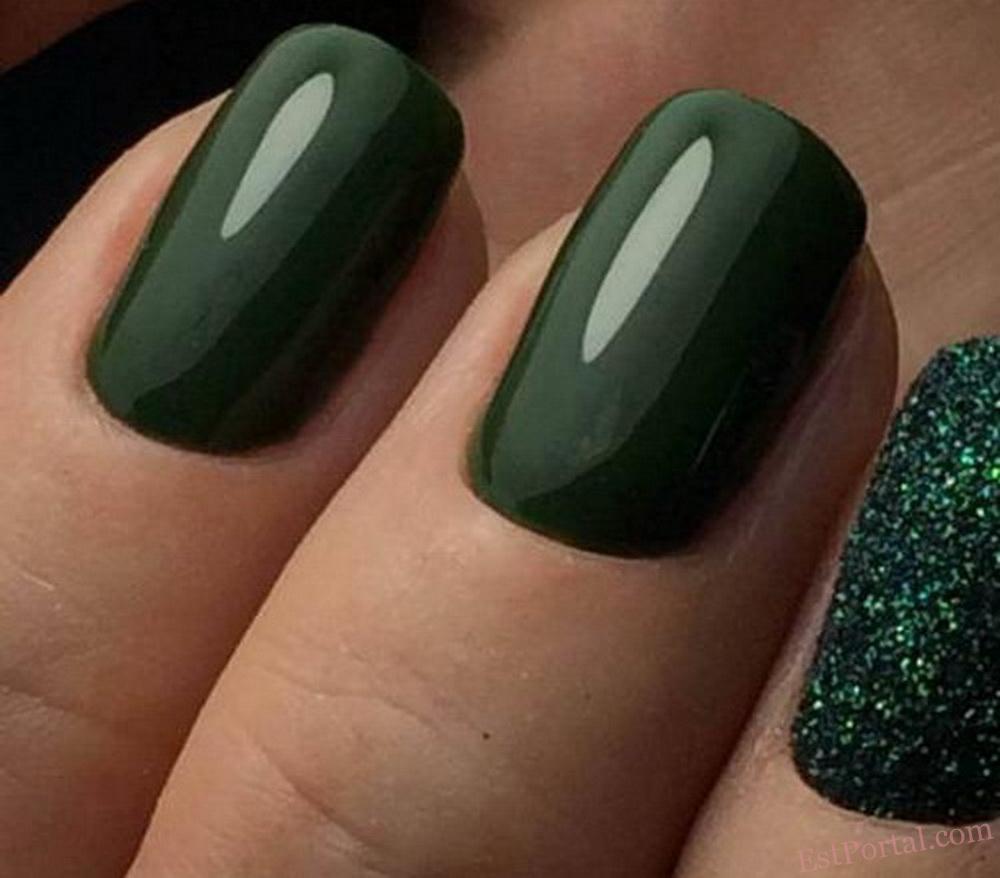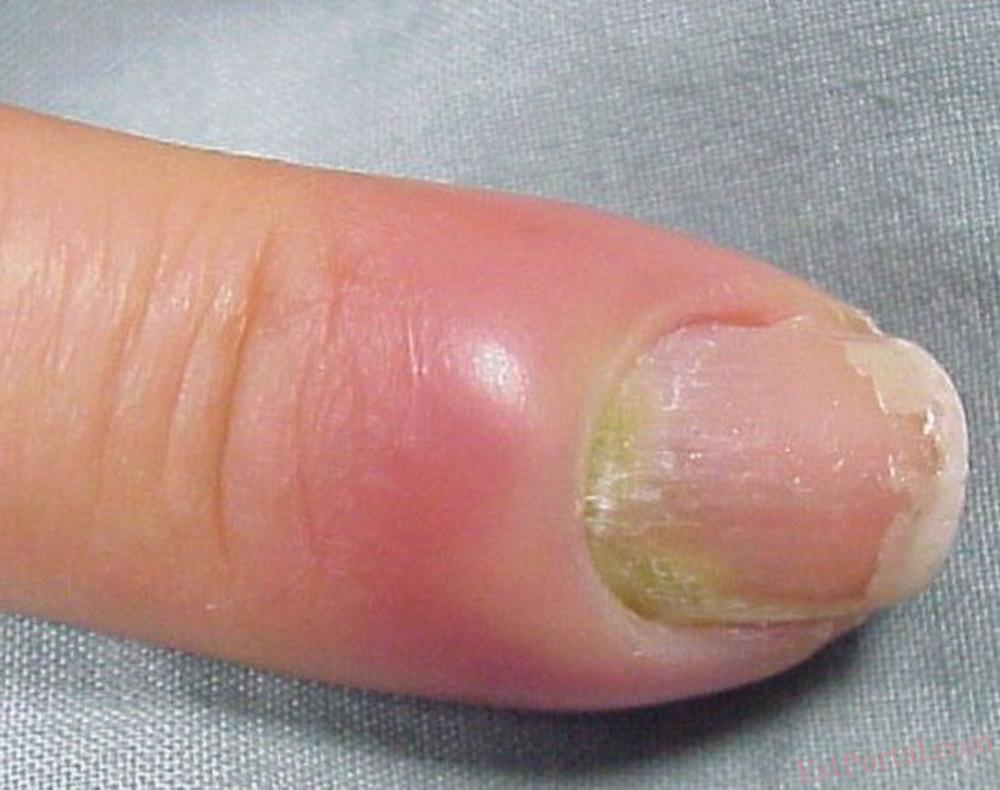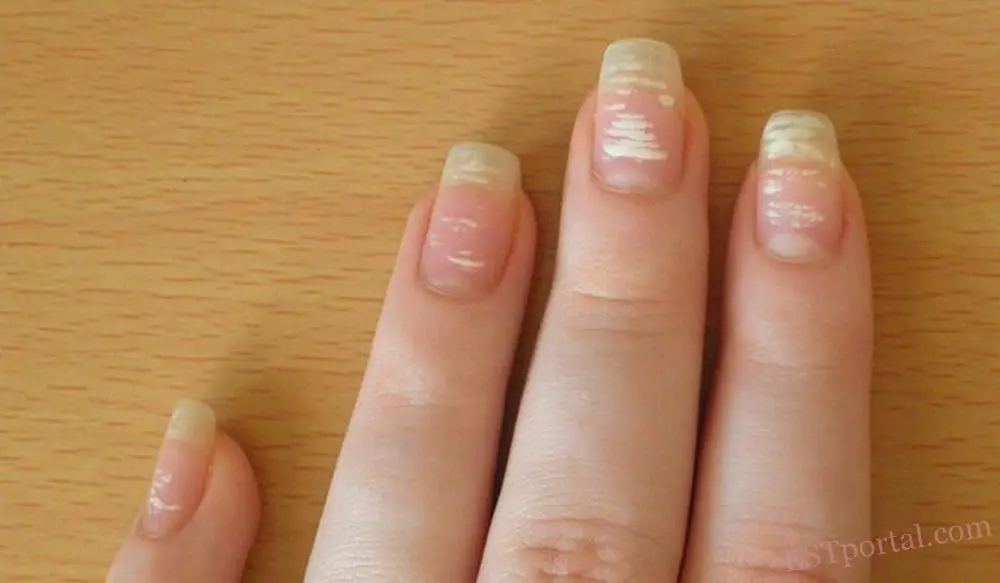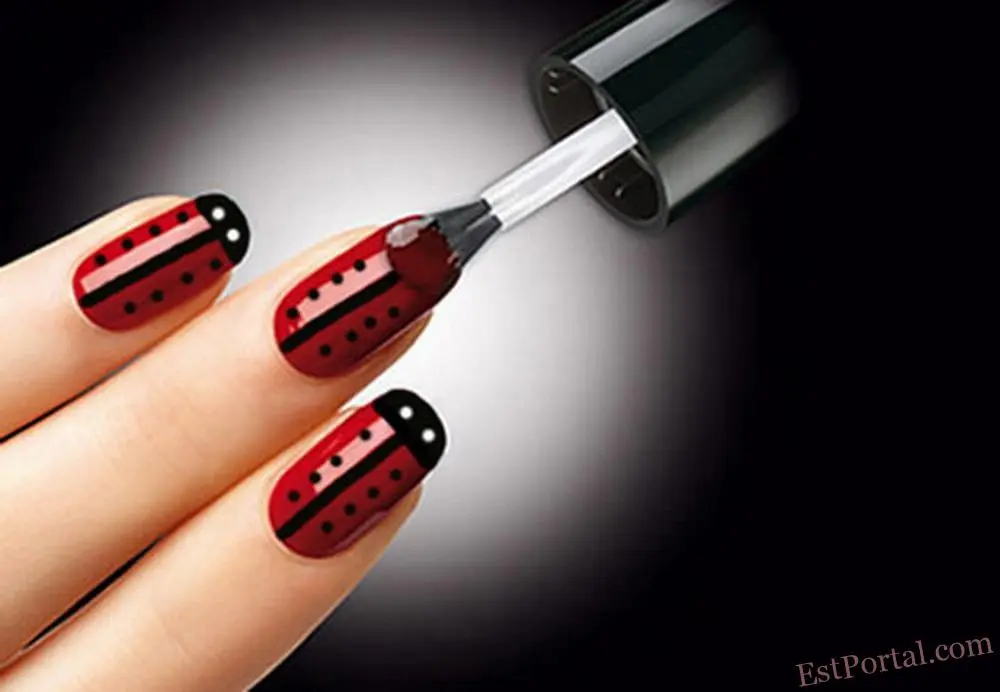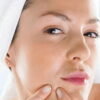
Гель-лак під кутикулу — ведмежа послуга
Хто не чув про те, що верх майстерності — це таке покриття, яке носиться шість тижнів, і при цьому майже не видно як росте нігтьова пластина, а з нею і покриття?
Цьому навчають школи та інтернет-ресурси. З хештегом #підкутикулу майстри викладають на загальний огляд свої роботи, й безмірно пишаються тим, що йдуть в ногу з модою та часом.
Ця мода в маси влилася, коли майстри, скуштувавши всіх принад роботи з гель-лаком, навчилися робити покриття, яке ідеально носиться, не тьмяніє, що не сколюється і не вигоряє. Намагаючись догодити улюбленим клієнтам, стали виконувати якомога глибший манікюр і наносити кольорове покриття якомога глибше під проксимальну складку. Адже як чудово: зробила манікюр, поїхала на море, а він всю відпустку виглядає цілком пристойно, майже не видно як відросли нігтики. Клієнт щасливий, майстру + 100 до карми.
І все прекрасно. Але поговоримо про реальні проблеми, що виникають при виконанні покриття в цій техніці.
Манікюр: процедура краси чи загроза здоров’ю?
Ми завжди повинні пам’ятати, що манікюр – процедура гігієнічна, тобто спрямована на підтримання чистоти та здоров’я. І якщо вже багато в арсеналі сучасного майстра манікюру взято з медицини, то треба завжди пам’ятати головне медичне правило: «Не нашкодь!»
Під час манікюру, відсуваючи епоніхій і зчищаючи птеригій, не можна чинити тиск на матрикс — корінь нігтя, адже це може спричинити серйозні проблеми з нігтьовою пластиною надалі. Саме пошкодження матриксу при очищенні птеригія з-під епоніхія є найчастішою причиною появи поздовжніх борозен на нігтьовій пластині. Якщо сильно пошкоджений корінь нігтя, пластина з борознами може піти разом з частиною нігтя, що відросла. Але може залишитися і назавжди, посилюючись замість борозен, поздовжніми тріщинами всієї товщини нігтя.
Не можна визначити візуально наскільки короткий чи довгий, міцний чи слабкий корінь нігтя. Буває, що міцні та здорові нігті мають настільки слабкий матрикс, що завдати серйозної травми можна навіть найменшим тиском на нього. Щоб дотримуватися правила «не нашкодь», потрібно орієнтуватися на слабкий і короткий нігтьовий корінь. Працювати із зоною кутикули потрібно дуже обережно. Пушер або фреза повинні лежати на поверхні нігтя строго паралельно самому нігтю, щоб чинити найменший тиск на нього, але в гонитві за ідеально очищеним підкутикульним простором про це багато хто забуває.
Покриття під кутикулу: техніка і ризики
Підняти гарненько кутикулу, щоб під нею профарбувати, можна тільки апаратом, зашліфувавши ороговілі клітини шкіри з проксимального валика. Багато майстрів виконують виключно класичний манікюр. У данину моді на покриття під кутикулу роблять дуже глибокий манікюр, а потім пушером підсувають те, чого вже немає. Кутикула зрізана, птеригій очищений, можна робити покриття, а відривати пушером живу тканину від нігтя не можна категорично! При обрізному манікюрі можна зробити покриття якомога близько до кутикули, але не під неї.
Звільняючи простір під епоніхієм, відкривається шлях для всіляких інфекцій, навіть якщо манікюр був зроблений стерильним інструментом. Кутикула – це захист нігтя, про це потрібно пам’ятати.
Клієнт не повинен відчувати жодних болючих відчуттів. Фото з ідеальним покриттям, але запаленими валиками та частими порізами, виглядають сумно. Навіть безпечним, на перший погляд, фрезером у разі неправильного використання можна нашкодити.
«Переношене» покриття — загроза здоров’ю
Але найважливіше це те, що клієнти, які люблять покриття під кутикулу, щоб носити його по 4-6 тижнів, наражають себе та свого майстра на серйозну небезпеку.
Виробники гель-лакових систем заявляють, що носити покриття можна не більше 21 дня. Після цього терміну полімерні зв’язки починають розпадатися, покриття стає непридатним для носіння, навіть якщо цього не видно. Небезпечно це в першу чергу тим, що при розпаді полімерних зв’язків елементи виробляють токсини, і можуть викликати алергію. Якщо не дотримуватися рекомендацій виробника, то накопичувальна алергічна реакція на токсини практично неминуча.
Наведемо приклад на фарбуванні волосся. Виробник в інструкції вказує на те, що змити фарбу необхідно через 30 хвилин. Ви, швидше за все, підете та змиєте її через 30 хвилин. Тому що наслідки перетриманої на волоссі фарби можуть бути плачевними: алергія, опік, несподівана зміна кольору волосся і багато інших, про які ми навряд чи дізнаємося, якщо дотримуватимемося технології фарбування. Ми не говоримо, що у нас немає часу, грошей або нам ліньки змивати фарбу, адже це необхідно зробити. З покриттям гель-лаком теж потрібно дотримуватися технології. Не лише покриття, а й зняття матеріалу. Те, що не видно озброєним оком не завжди є безпечним.
Ще один важливий момент: «переношене» покриття небезпечне для майстра при знятті. Особливо якщо зняття гель-лаку відбувається спилюванням. Якими б хорошими не були витяжки — все одно частинки токсинів разом з пилом від спилювання потрапляють на шкіру та в дихальні шляхи. І якщо клієнти регулярно пропускають рекомендований час корекції, то майстер постійно контактує з небезпечними матеріалами. Спробуйте замислитися, якщо спеціаліст працює кожен день і приймає по кілька клієнтів, чим це загрожує для його здоров’я. Часто можна почути, що у майстра після кількох років роботи виникають професійні захворювання у вигляді алергічних дерматитів, екземи, бронхіальної астми. Не можна виключити той факт, що багато в чому на розвиток цих хвороб впливає недотримання технології роботи з гелевими системами.
Як переконати клієнтів дотримуватися строків корекції?
Щоб привчити клієнтів до корекції максимум через три тижні після покриття, є кілька порад:
- Необхідно пояснити чому потрібно дотримуватися термінів. Розповісти про всі ризики. Можливо, частина клієнтів візьме це до уваги та почне записуватися частіше.
- Для тих, хто, як і раніше, приносить вже «переношений матеріал», можна підвищити ціну на послугу зняття гель-лаку. До 21 дня вартість одна, а після 21 дня носіння покриття – вартість зняття дорожча.
- Ті, хто не хоче платити за зняття дорожче, але й раніше зазначеного терміну приходити не бажає — нехай покриття знімає в іншого майстра. Просто тому, що здоров’я коштує дорожче. У цьому випадку клієнт або дотримуватиметься рекомендацій, або зніматиме гель-лак в іншому місці, або просто знайде іншого майстра. Не бійтеся втратити клієнта. Якщо це клієнт, для якого професійні рекомендації нічого не варті й тим більше здоров’я його та майстра — ви небагато втрачаєте з відтоком такого клієнта.
Дбайте про своє здоров’я та залучайте свідомих клієнтів!
Христина ЛИСОВА — майстер манікюру та нейл-дизайну



